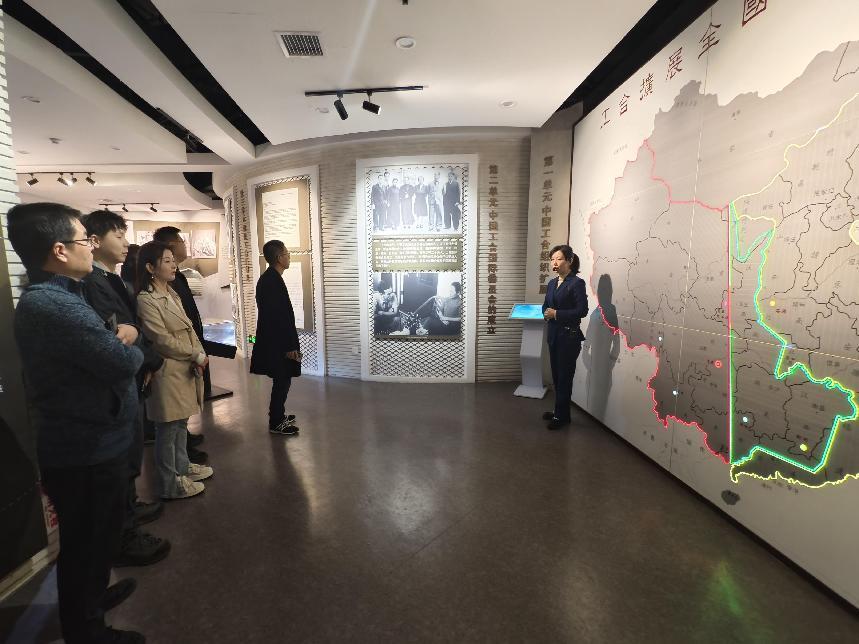Focus on circular economy and aim for green transformation
2024-04-04 23:26:12 , Source : Discover ShaanxiA major interview event was officially launched on April 1st in Baoji City, Shaanxi Province, and the media group went to the Liufengguan Circular Economy Industrial Park, Baoji-Chengdu Railway Cultural Experience Hall, and the Chinese Industrial Cooperative Movement Memorial Site.

At the construction site of the Liufengguan Circular Economy Industrial Park in Fengxian County, a modern industrial park is taking shape. This is a microcosm of Fengxian County's promotion of green transformation and active development of the circular economy industry.
Fengxian County is located in the hinterland of the Qinling Mountains and at the source of the Jialing River. It boasts a beautiful ecological environment and abundant mineral resources, being one of the important lead-zinc bases in the country. The county currently has tailings reserves exceeding 100 million tons, with an annual addition of 3 million tons. The lead-zinc mining in Liufengguan Town accounts for 60% of the county's total. In line with the ecological and environmental protection requirements of reducing the number of tailings ponds, mining companies must achieve the resource utilization of tailings.
In recent years, Fengxian County has been striving to find a balance between ecological benefits and economic benefits, exploring a path of high-quality development in industrial restructuring, actively developing the circular economy industry, and giving rise to industrial incubation base projects.
The comprehensive recycling and utilization of waste slag has successfully reduced the accumulation and waste of slag in the mines while also reducing the environmental risks. This recycling practice not only protects the ecological environment of the Qinling Mountains but also maximizes the utilization of resources.
After the completion of the industrial incubation base projects, more efforts will be taken to extend the value chain around lead-zinc ore mining and selection, smelting residue utilization, and non-ferrous metal recycling. A well-rounded circular industrial system will be established. The goal is to create an industrial park, the new economic growth pole of Fengxian County.

The Lingguan Gorge Scenic Area at Fengxian County was built based on the existing railway tunnel of the Baoji-Chengdu Railway. The railway mainly facilitated the exchange of goods between the southwest and northwest regions of China, serving as the backbone of the national railway network and a remarkable feat in the history of Chinese railway construction.
Lingguan Gorge Scenic Area features railway relics, leisure oxygen bars, and ancient Qiang culture. Leveraging the natural scenery of the canyon, it boasts attractions such as the Baoji-Chengdu Railway Cultural Experience Hall, Qinling Natural Art Gallery, rail train-themed resort area, and ecotourism area, making it a comprehensive leisure site.
During the 1930s, Shuangshipu of Fengxian County became the center of the Chinese Industrial Cooperative Movement. The principal organizers of the Chinese Industrial Cooperative Movement, Rewi Alley, Edgar Snow and Helen Foster Snow, Lu Guangmian, and British journalist George Hogg, established numerous cooperatives as well as institutions such as schools and hospitals, bringing industrial civilization to this town in the hinterland of the Qinling Mountains.


The Chinese Industrial Cooperative Movement Memorial Site is located in Shuangshipu Village, Shuangshipu Town, Fengxian County. It aims to commemorate the international fighters in the last century. From 1939 to 1945, they carried out the Chinese Industrial Cooperative Movement in Fengxian County and established the Peili Vocational Institute, leaving behind a glorious history.

Government Organizations



Other Links

Copyright@www.shaanxi.gov.cn All Rights Reserved
Registration Number:陕ICP备10004160号
